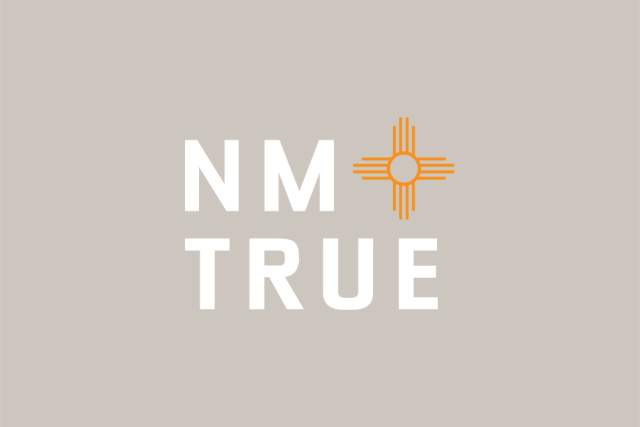First launched on September 28, 1922, the Gallup Inter-Tribal Indian Ceremonial has been taking place in Gallup, New Mexico, for nearly a century. It’s not only one of the state’s oldest events, but also one of the oldest continuous recognitions of Native American culture and art. (It has inspired similar gatherings in locales across the Southwest, but has always been the original.) After nearly a hundred years, a few of the details of the event’s history have faded away, but the Ceremonial’s founding story is clear.
The First Gallup Inter-Tribal Indian Ceremonial
Two travel trends coincided to set the stage for the Gallup Inter-Tribal Indian Ceremonial’s creation: The Atchison, Topeka and Santa Fe Railway was chugging across the American West delivering travelers to an ever-growing number of Harvey Houses and car travel was growing easier and ushering in the age of the great American road trip. A handful of Gallup traders—individuals who ran businesses swapping sundry goods for Native American art—gathered to attract more tourists to come to and stay in Gallup.
In the Ceremonial’s first year, travelers pulled into Lyons Memorial Park north of the railway and circled their cars around a set of bonfires. They turned on their headlights to illuminate Native American dancers sharing social versions of traditional dances seldom seen off the reservation. That year, organizers paid the dancers a silver dollar to participate. A circus-style tent sat nearby for traders to sell Native American artwork, like silver jewelry and woven rugs. These nightly dances and the art market are still cherished elements of the Ceremonial today.

The event also included a parade and a rodeo, though in forms much different from the ones today’s ceremonial goers see. The original parade was more of an arrival procession, as Native Americans came into the event on horse-drawn carriages from the nearby Navajo Nation and Pueblo of Zuni. The parade continued under horse- or foot-power (some people walked) long into the event’s history. That allowed the parade to survive World War II, when others across the country were canceled to preserve gasoline. The rodeo also wasn’t a rodeo as we know it today, either. It was a time for Native American games, including foot races, which continue to be part of today’s ceremonial in the form of 5K and 10K races.
How the Ceremonial Grew
In 1923, organizers built a grandstand, though it “wasn’t very grand,” says Kathleen Matta, whose father, Edward Merry was a board member 1954–1972. Matta joined the board in 2019 and is writing a book on the Ceremonial’s history. She explains that the event’s next phase of growth happened in the 1950s and 1960s when it came to include Native American groups from beyond New Mexico, like Plains tribes and groups from Mexico. The Ceremonial continues to be a hub for Native America today, with tribes from Oklahoma, Nebraska, Washington, and Mexico participating in the nightly dances. The queen pageant was also added during this period.
Teri Fraizer, whose great-grandmother participated in the first ceremonial and is a former Ceremonial queen, says the event changed greatly when it was relocated just outside of town to the scenic Red Rock Park in 1977. Today, Fraizer coordinates the groups performing at the nighttime dances and also organizes 100 evenings of Nightly Indian Dances for the town of Gallup through the summer season. When selecting groups to dance, she searches for authenticity—an important part of every aspect of Ceremonial.
“I’ve been performing in [the Ceremonial] since I could walk,” she says. “People just want to come dance, share their culture, and be proud of who they are. They want to perpetuate their culture.” Fraizer is starting to include youth groups even in the nightly performances, which is akin to performing on the main stage. “I want them to have the opportunity to look forward and keep dancing.”
Fraizer attributes the Ceremonial’s longevity to “American Indians wanting to hold on to their culture. Artists are the culture keepers in their own genre, whether singing, painting, dancing, or making jewelry. The people around and in Gallup are who make the Ceremonial happen,” she explains.
The Gallup Inter-Tribal Indian Ceremonial Today

The Gallup Inter-Tribal Indian Ceremonial is now held each year in August. Today’s event includes a world-class juried art market and nightly dances—just as the original version did nearly a hundred years ago—as well as a morning and evening parade. Contemporary parades feature Native American marching bands and floats, like many modern-day parades, but still stands out since Native American dancers are the core of the event.
Deeply rooted in Native American culture, the all-Indian rodeo displays the grit and horsemanship for which many tribes are known. The event includes the eight standard rodeo events, like roping and barrel racing, but it still has a few unique touches, like a Pony Express Race and a women’s frybread pan throwing contest.
Nightly dances feature performers from across the U.S. and Mexico, and a competition pow wow, including a variety of dance styles. During the grand entry, participants clad in their regalia enter the grounds together in a dazzling display. The event, like the Ceremonial as a whole, is not to be missed.
Written by Ashley M. Biggers for Matcha in partnership with New Mexico Tourism Department.

